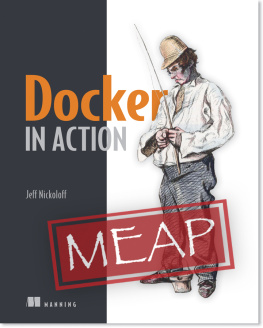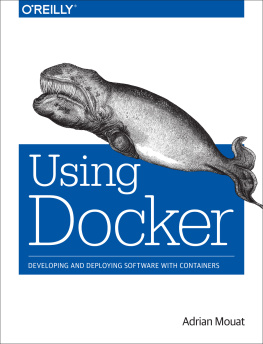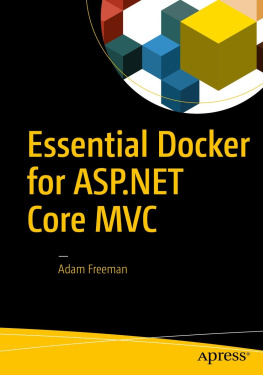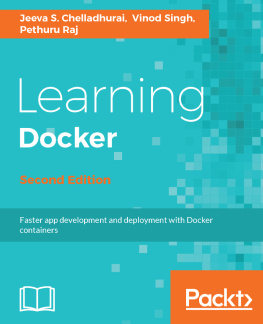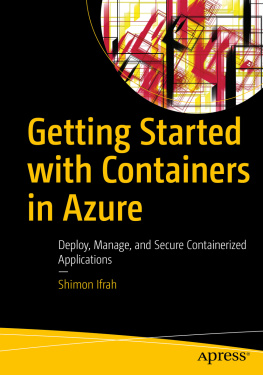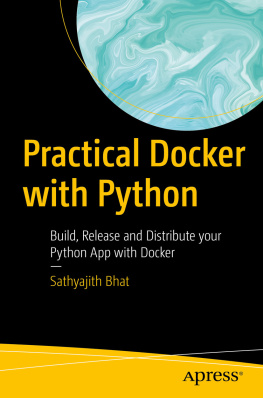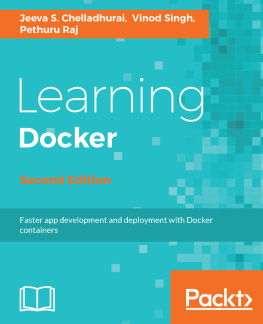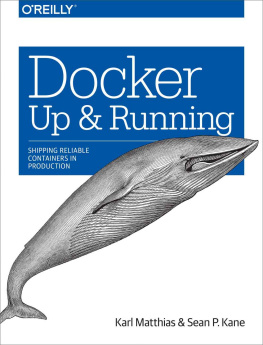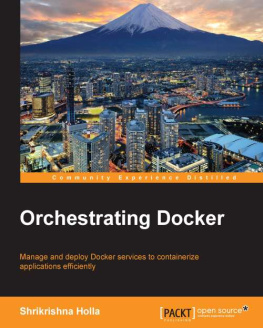Jeff Nickoloff - Docker in Action
Here you can read online Jeff Nickoloff - Docker in Action full text of the book (entire story) in english for free. Download pdf and epub, get meaning, cover and reviews about this ebook. year: 2016, publisher: Manning Publications, genre: Computer. Description of the work, (preface) as well as reviews are available. Best literature library LitArk.com created for fans of good reading and offers a wide selection of genres:
Romance novel
Science fiction
Adventure
Detective
Science
History
Home and family
Prose
Art
Politics
Computer
Non-fiction
Religion
Business
Children
Humor
Choose a favorite category and find really read worthwhile books. Enjoy immersion in the world of imagination, feel the emotions of the characters or learn something new for yourself, make an fascinating discovery.
- Book:Docker in Action
- Author:
- Publisher:Manning Publications
- Genre:
- Year:2016
- Rating:3 / 5
- Favourites:Add to favourites
- Your mark:
Docker in Action: summary, description and annotation
We offer to read an annotation, description, summary or preface (depends on what the author of the book "Docker in Action" wrote himself). If you haven't found the necessary information about the book — write in the comments, we will try to find it.
Summary
Docker in Action teaches readers how to create, deploy, and manage applications hosted in Docker containers.
Purchase of the print book includes a free eBook in PDF, Kindle, and ePub formats from Manning Publications.
About the Technology
The idea behind Docker is simple. Create a tiny virtual environment, called a container, that holds just your application and its dependencies. The Docker engine uses the host operating system to build and account for these containers. They are easy to install, manage, and remove. Applications running inside containers share resources, making their footprints small.
About the Book
Docker in Action teaches readers how to create, deploy, and manage applications hosted in Docker containers. After starting with a clear explanation of the Docker model, you will learn how to package applications in containers, including techniques for testing and distributing applications. You will also learn how to run programs securely and how to manage shared resources. Using carefully designed examples, the book teaches you how to orchestrate containers and applications from installation to removal. Along the way, youll discover techniques for using Docker on systems ranging from dev-and-test machines to full-scale cloud deployments.
Whats Inside
About the Reader
Readers need only have a working knowledge of the Linux OS. No prior knowledge of Docker is assumed.
About the Author
Jeff Nickoloff, a software engineer, has presented Docker and its applications to hundreds of developers and administrators at Desert Code Camp, Amazon.com, and technology meetups.
Table of Contents
PART 1 KEEPING A TIDY COMPUTER- Welcome to Docker
- Running software in containers
- Software installation simplified
- Persistent storage and shared state with volumes
- Network exposure
- Limiting risk with isolation PART 2 PACKAGING SOFTWARE FOR DISTRIBUTION
- Packaging software in images
- Build automation and advanced image considerations
- Public and private software distribution
- Running customized registries PART 3 MULTI-CONTAINER AND MULTI-HOST ENVIRONMENTS
- Declarative environments with Docker
- Clusters with Machine and Swarm
Jeff Nickoloff: author's other books
Who wrote Docker in Action? Find out the surname, the name of the author of the book and a list of all author's works by series.

